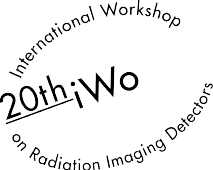Speaker
Description
Breast cancer is the main cause of tumor deaths in women. Early diagnosis of the disease is widely approved as being essential for effective treatment. An estimate of about 246,660 new breast cancer cases was done in 2017, and the death rate rises to about 40,450 in that year [1]. Due to these reasons, breast cancer diagnosis at the very early stage is important in order to reduce the incidences and mortality rates. Positron Emission Mammography (PEM) is a breast dedicated imaging device which uses pair of annihilation gamma photons to detect cancerous breast tissues. The PEM device is compact in nature with a reduced field of view to cover the entire breast region, and it employs few detector modules which makes it cost-efficient. To effectively diagnose breast cancer at a very early stage, a device with high spatial resolution and sensitivity is required. PEM detectors based on semiconductor materials are characterized by an excellent intrinsic system spatial resolution but are not cost-effective [2], whereas detectors based on scintillator crystals are cost-effective but have limited intrinsic resolution to detect small breast lesions. This study focuses on improving the resolution of scintillator detectors by simulating a PEM scanner employing 1 × 1× 10 mm3 laser processed [3] scintillator crystal such as Lutetium-Yttrium Oxyorthosilicate (LYSO). The simulation was done with Geant4 application for emission tomography (GATE) software, and performance evaluation was done with National Electrical Manufacturers Association (NEMA) phantom studies using Maximum Likelihood Expectation Maximization (MLEM) technique. The scanner geometry has 110 mm trans-axial field of view (FOV) and 128 mm axial FOV. Evaluation result showed that the scanner has 7.6% system sensitivity and 1 mm system spatial resolution.
Keywords: PEM; LYSO, GATE; Semiconductor materials; Scintillator crystals; laser induced optical barrier
REFERENCES
1. Li, L., et al., (2015). Performance Evaluation and Initial Clinical Test of the Positron Emission Mammography System (PEMi). IEEE Transactions on Nuclear Science, 62(5), 2048-2056.
2. D Uzun., et al., (2014) Simulation and evaluation of a high resolution VIP PEM system with a dedicated LM-OSEM algorithm, Journal of Instrumentation, Volume 9 C05011
3. Sabet, et al., (2016). Novel laser‐processed CsI: Tl detector for SPECT. Medical physics, 43(5), 2630-2638.




